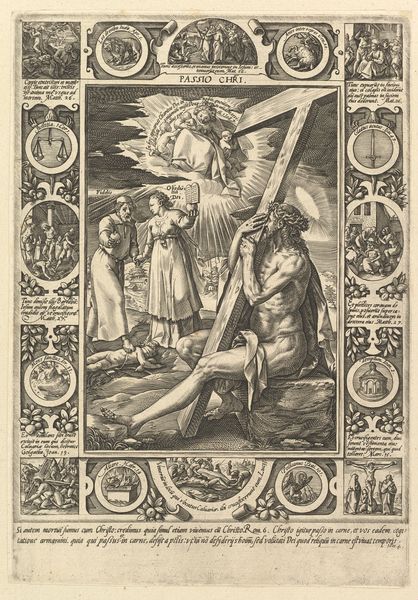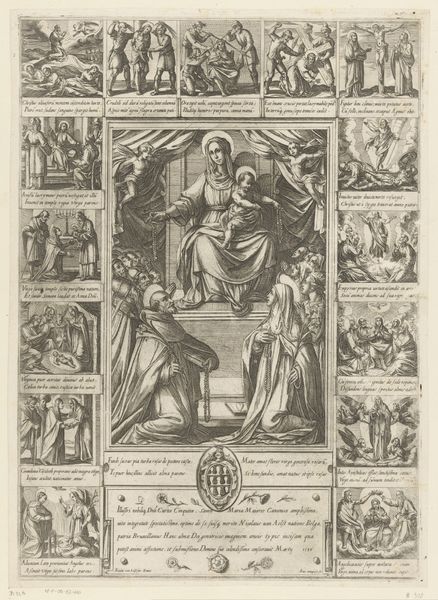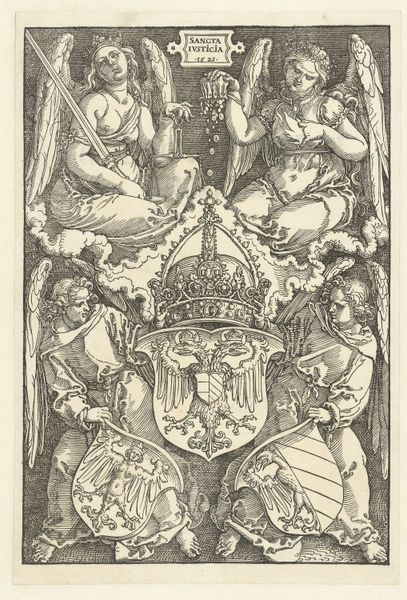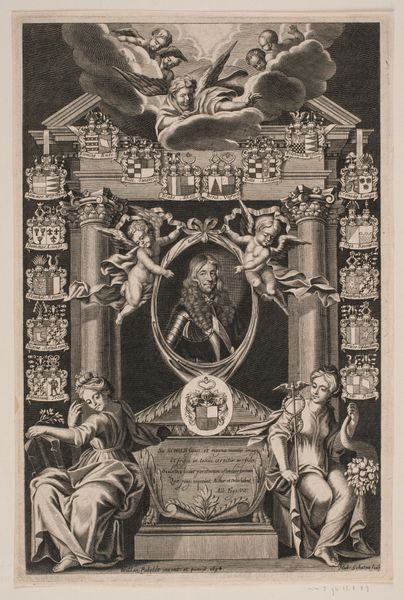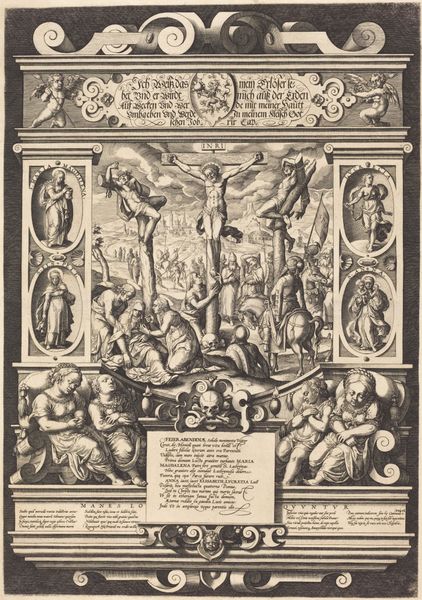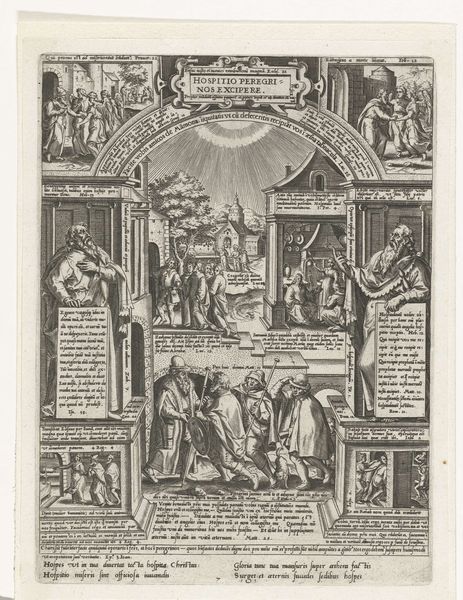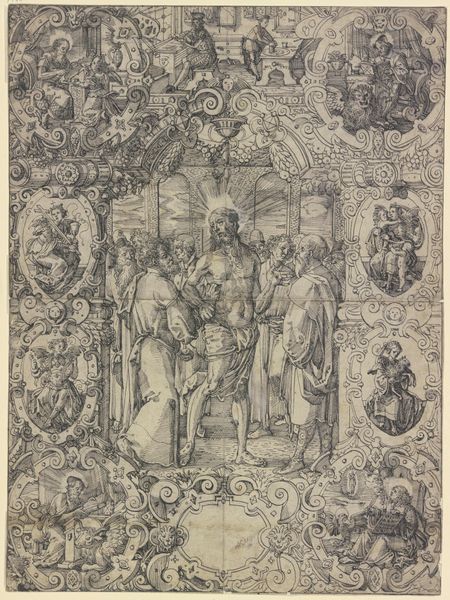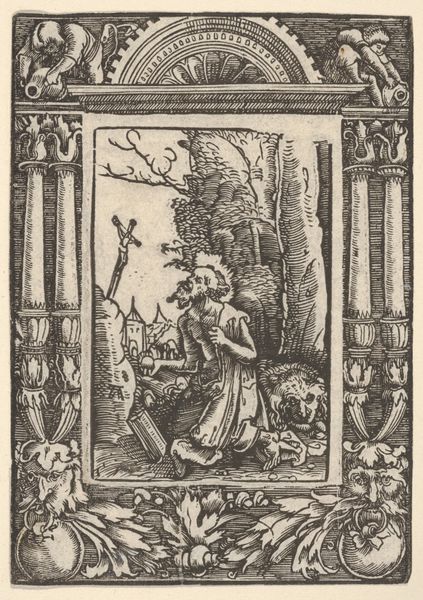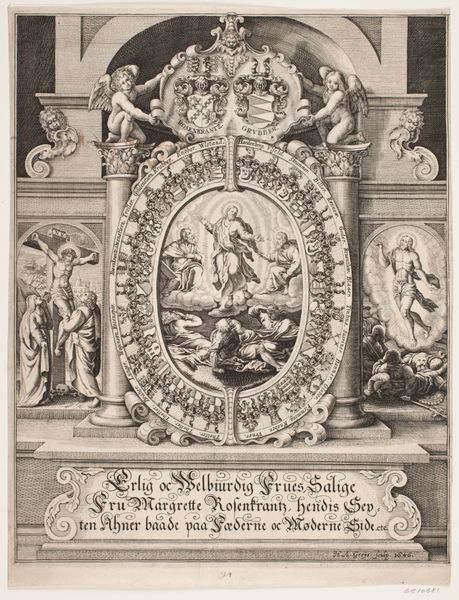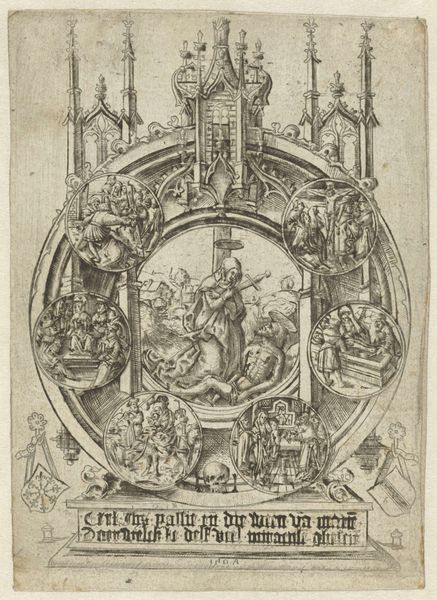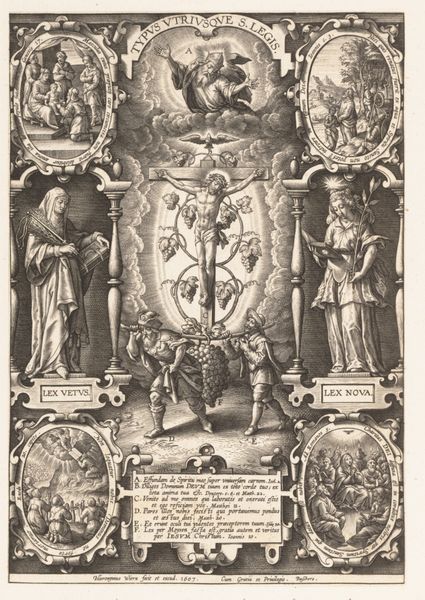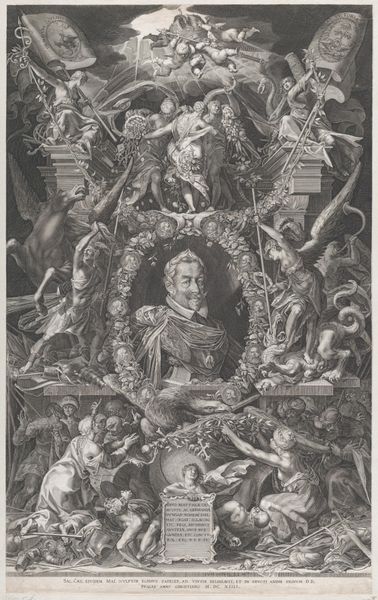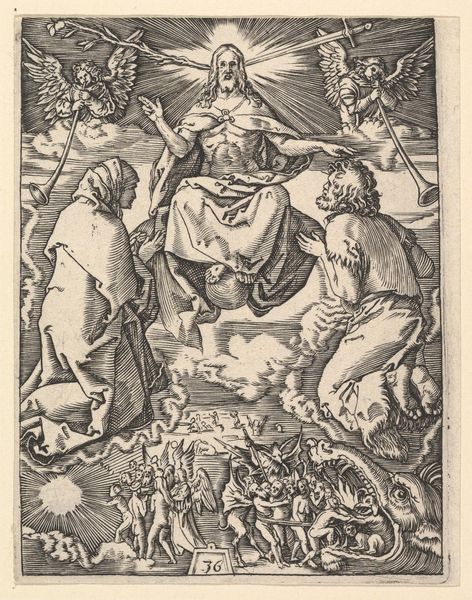
The Infant Christ, from "Allegorical Scenes on the Life of Christ, from Christian and Profane Allegories" 1560 - 1617
0:00
0:00
drawing, print, ink, engraving
#
portrait
#
drawing
#
allegory
#
animal
# print
#
mannerism
#
figuration
#
ink
#
history-painting
#
northern-renaissance
#
engraving
Dimensions: sheet: 10 5/8 x 7 1/2 in. (27 x 19 cm) mount: 13 7/8 x 10 5/16 in. (35.2 x 26.2 cm)
Copyright: Public Domain
Curator: Here we have "The Infant Christ, from 'Allegorical Scenes on the Life of Christ, from Christian and Profane Allegories'," an engraving crafted between 1560 and 1617 by Hendrick Goltzius. Editor: Wow, it’s striking! So much symbolism packed into one scene. The mood is almost dreamlike, yet also feels deeply structured, even didactic. Curator: Indeed. Goltzius was a master engraver, and this work exemplifies his exploration of Mannerist aesthetics through printmaking. Notice the emphasis on line, the almost sculptural quality he achieves with ink. It reveals a skilled labor process of careful carving and considered composition. Editor: Absolutely. Looking closer, you see this interplay between religious iconography and humanist philosophy. It's positioned during the Northern Renaissance with its evolving religious identity and cultural discourse around childhood and divinity. How would audiences at the time engage with the allegory being presented, and also the politics implicit to that discourse? Curator: The prints were made to be widely distributed and accessible at that time. Its materiality inherently served to create access by dismantling traditional value systems in art centered around singular works and wealth, which only made art accessible to a certain sector of society. Editor: Yes! The composition really draws your eye through this system of signs, like a theological roadmap, almost. We need to consider accessibility broadly beyond class but also literacy: were the image and accompanying text serving the same function, for whom, and how might that point to the uneven distribution of knowledge in Goltzius’s society? Curator: Certainly a multi-layered approach was intended to engage audiences through text and image. As an object intended for multiple uses by being reproduced, it emphasizes labor and distribution through both material means and through dissemination of meaning. Editor: The engraving prompts critical investigation beyond the object's value itself into social issues present throughout history to even contemporary society. It allows me to think of today's labor concerns over fair pay and sustainability in material goods. Curator: The ability to provoke those ideas proves the power behind artwork as social commentary and beyond just being an art object. Editor: Right, thinking about all the complex visual encoding on the image itself allows me to be active by interrogating both its and today's context.
Comments
No comments
Be the first to comment and join the conversation on the ultimate creative platform.
